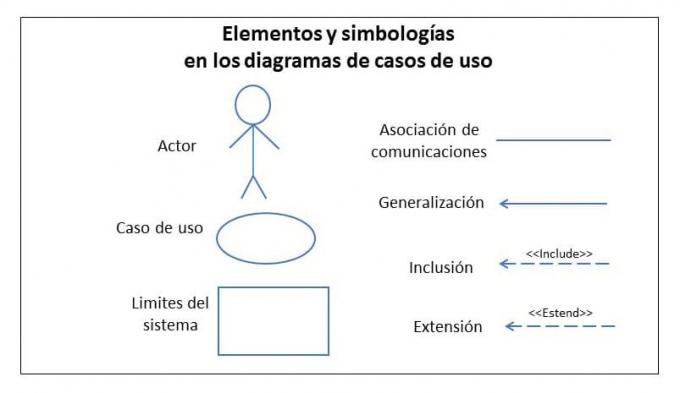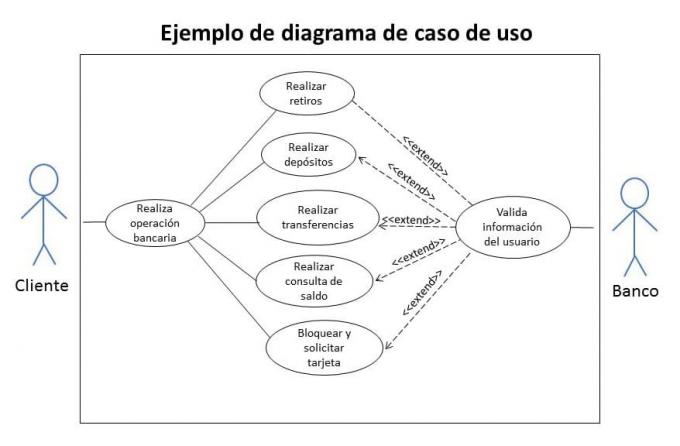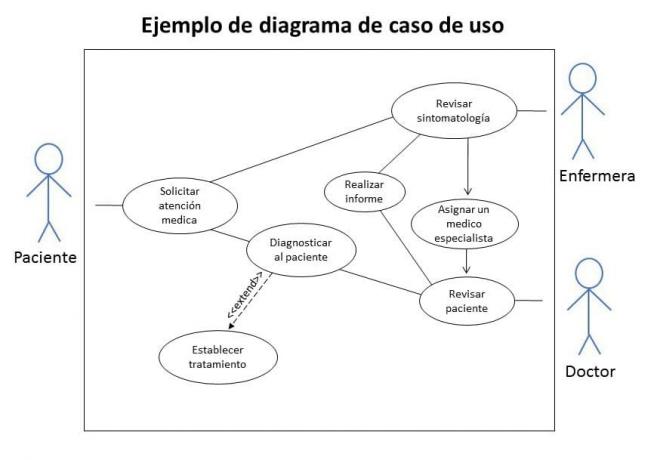The use case diagram is a diagram model within UML models (Unified Modeling Language), allowing the interaction of activities in a given system to be interpreted through a graphic display.
In this article you will find:
What is a use case diagram and what is it useful for?
The use case diagram is a graphical representation that allows to visualize different roles in a systemand interactions for the execution of functions or activities, be they performed by people or things.
Advertisements
What is the use case diagram useful for? The usefulness of this system is based on representing the interactions in the execution of different roles within the same system, which facilitates exemplification from the point of view of the executors"actors" the operation of its main functions.
This diagram is useful in organizations to guide work teams in the performance of each assigned function and how each member must interact with the rest of the team, machinery or objects to carry out their activities through this graphic representation.
Advertisements
Elements and symbologies in usage diagrams
In drawing up the use case diagrams the correct use of each element and symbology is essential to be able to correctly reflect the roles and interactions of the actors within a system.
To develop the diagram there are the following elements or symbologies:
Advertisements
- Actors: This is represented by a sketch of a person, as an element to represent the executors of the activities.
- Use cases: It is the symbology used in the form of an oval to represent the functions that the actors perform.
- System limit: reflects the boundaries or scopes covered a certain system, this is reflected with a rectangle, it is useful to reflect different areas within it.
- Relations: these are lines or arrows that are used to reflect the interactions between the roles of the actors.
Let's see the following graph to identify these elements and symbologies necessary for the elaboration of the use case diagram:

Advertisements
Use case diagram example (customer service)
For this example we will take as a reference the customer service system in the sales department of a certain company.
As with all sales processes, in addition to the customer, the seller and in some cases a cashier in addition to the seller, although it can also be a function of the seller himself.
Advertisements

In this case, three actors intervene, as seen in the following image of the diagram:
As can be seen through this simple example, the roles each actor plays are easy to understand, using as an instrument of representation a use case diagram.
In the first instance, the client interacts with the seller to formalize the order of what he is going to buy, said order information is issued by the seller to box for the cashier to make the payment and issue the invoice, this in turn takes the customer's data and delivers the invoice for the seller to deliver the order.
However, the seller, as part of his functions, must ensure that the shelves have a sufficient stock of merchandise, as well as provide information to the buyer of the products.
As for the cashier, he must receive the order information, issue the invoice, deliver it to the customer and the At the end of the day, do the closing or cash settlement to check that the accounts match the sales carried out.
Example of use case diagram (user management system)
Within a system there may be different areas or subsystems that in the same way can be represented in usage diagram without losing sequence and coherence of the processes, just by reflecting the boundaries of the areas.
Setting the limits is not mandatory, but it is useful when you want to mirror complex or very large systems.
To exemplify this case, let's see the following image with the example of the diagram:

As seen in the picture, in this diagram of use cases the process of the user management system is represented of the most common banking operations.
However, between the two actors a rectangle is used to denote that this is just an area or part of the system, since banking systems include a great variety of procedures within the services offered to clients.
Thus, the rectangle in the diagram represents the limit of only one area within the financial services offered by a bank or the activities carried out in it.
Use Case Diagram Example (Hospital Care System)
The functionality of use case diagrams to represent the interrelationships between the different actors, is largely due to representation of the system in the most simple and precise possible.
Excessive use of elements to exemplify functions and stakeholder interactions can lead to confusionTherefore, only important and indispensable elements or factors to be highlighted in the system should be represented.
To exemplify how the roles of a system can be represented in a simple way, let's see the following diagram:

In this case, a use case diagram is applied to represent a hospital care system, Well, although each actor can perform more roles than those represented in this diagram, This exemplifies the essential functions and interactions while maintaining the sense of the system process.
In this same context, the diagram represents an example of the medical care process that a patient receives when arriving at a hospital, being the first instance attended by a nurse who in view of the patient's symptoms refers him to a specialist doctor, the nurse in turn makes the report of the patient informing the doctor of her health condition, however, the doctor reviews and diagnoses the patient who decides what treatment to apply according to the presented pathology.

